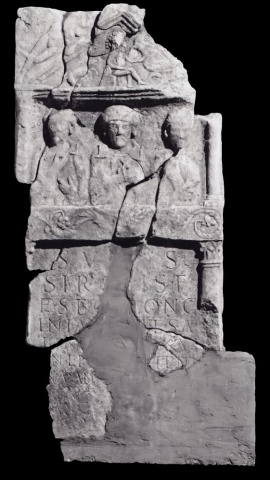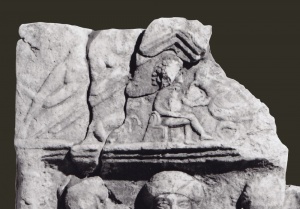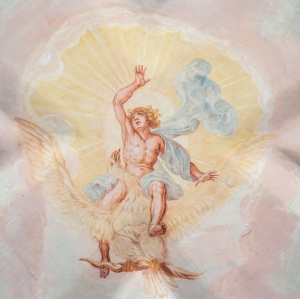A Comely Youth Carried off by an Eagle
Zeus and Ganymede: A Story of Love, Dominance or Abuse?
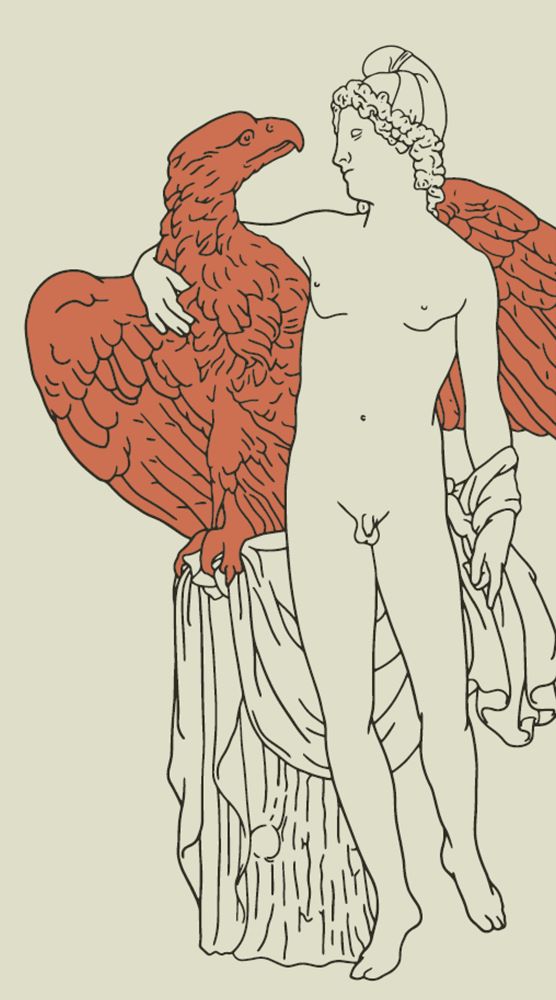
Interpretive Drawing of Ganymede with Zeus in the form of an eagle.
Author: Gorazd Koščak
Zgornja Pohanca near Brežice is the origin of a Roman-era tombstone dating from the late first or early second century AD. Two female figures and a male figure are depicted in the central part of the tombstone. An inscription below the portrait niche states that Surus, son of Siro, had the tomb built for his wife, his daughter and himself. The names and costumes reveal the native origin of the subjects of the portraits.
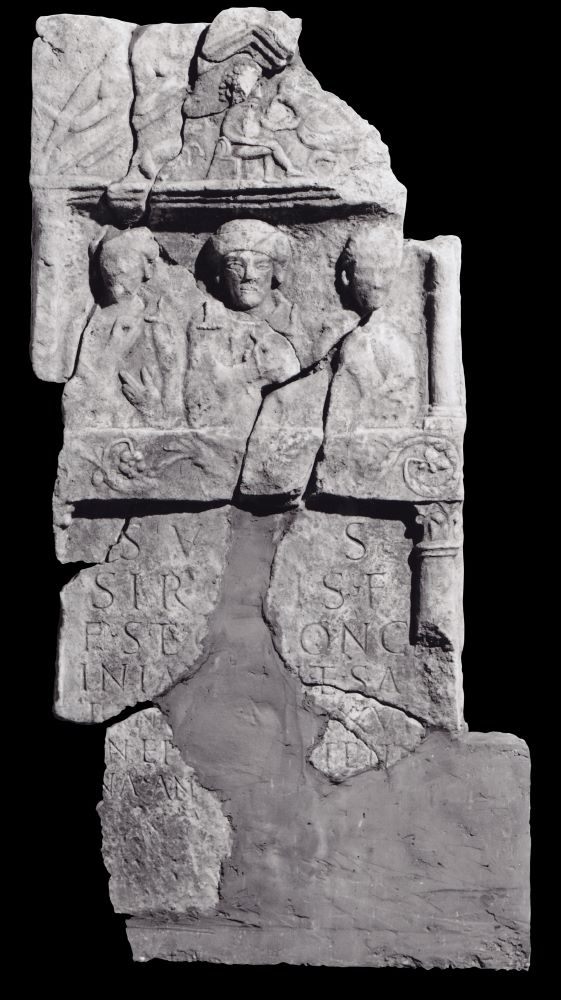
Tombstone from Zgornja Pohanca, late 1st or 2nd century. Posavje Museum Brežice
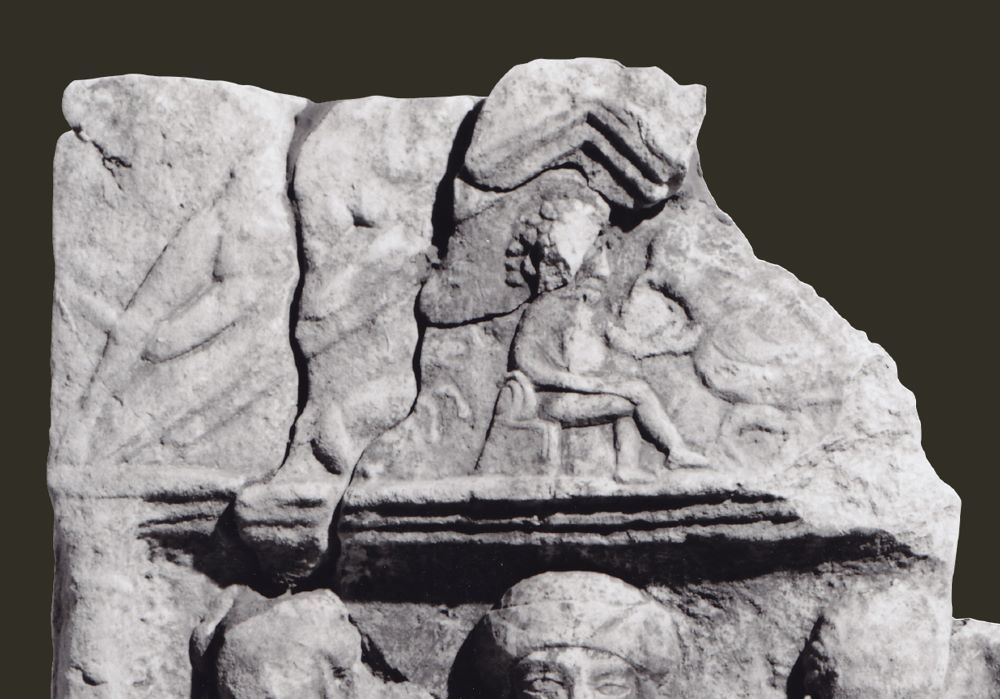
Tombstone from Zgornja Pohanca, detail
The tympanum of the tombstone contains a relief of a seated boy offering a cup to a large eagle. This is a depiction of the myth of the Trojan prince Ganymede, who was granted such unearthly beauty that Zeus himself fell in love with him, transformed himself into an eagle and carried him off to Olympus. There, Ganymede became immortal and served the gods as their cupbearer or wine-pourer, in the same way that youths in ancient Greece served wine to adult men. Zeus compensated Ganymede’s father, the Trojan king Tros, with a gift of immortal horses.
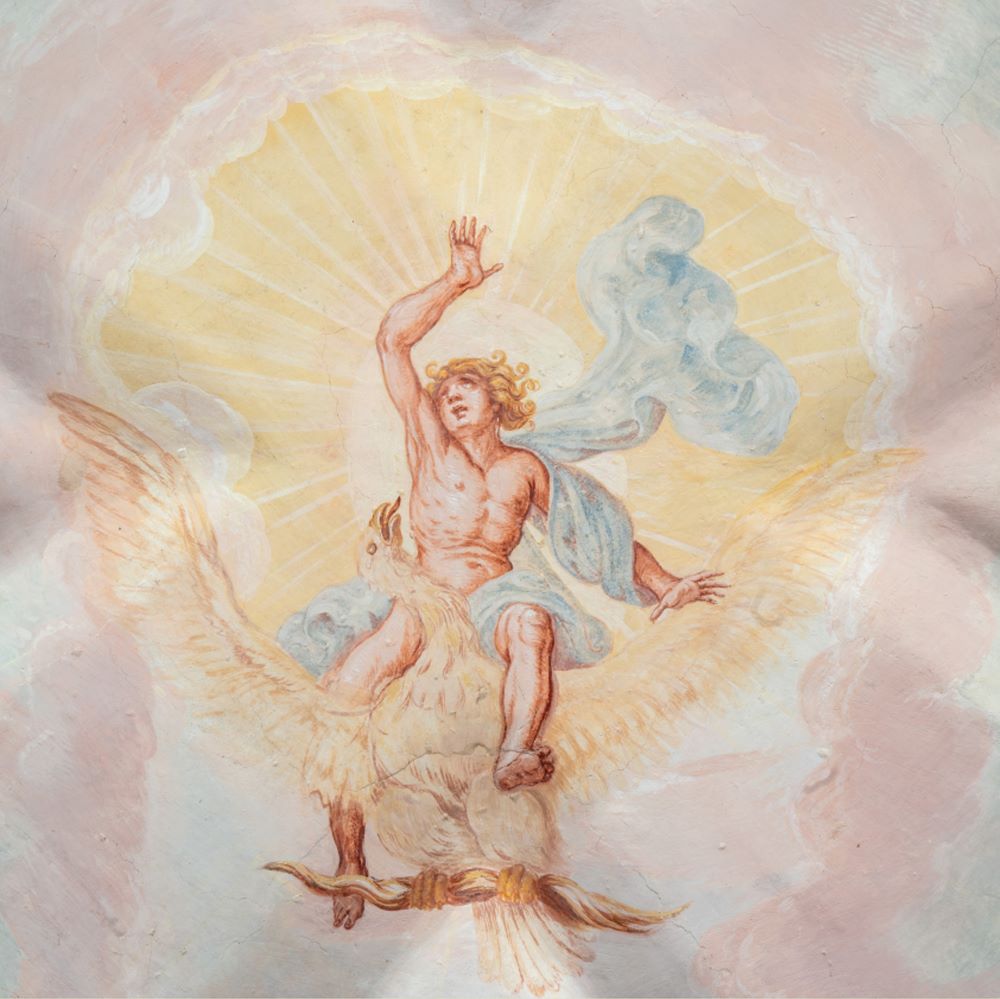
The Rape of the Trojan Prince Ganymede, Baroque fresco painting, garden pavilion of the Soteska Manor, unknown artist.
Photo: Andrej Furlan, UIFS ZRC SAZU
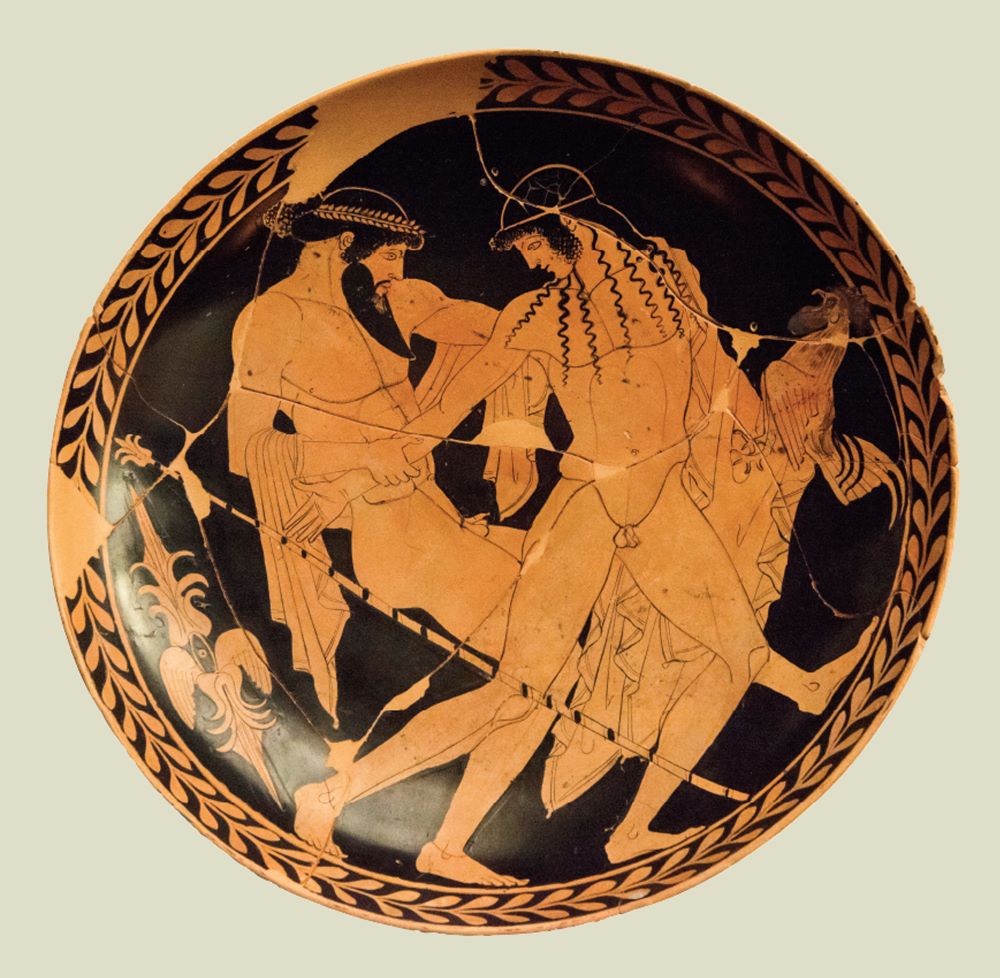
Zeus and Ganymede. Athens, 475–425 BC, the Penthesilea Painter. Museo Archeologico Nazionale di Ferrara.
Foto: Egisto Sani
The myth of Ganymede was an important connecting element in the ancient world. It established the intimate relationship between an adult male and an adolescent male as a recognised social institution. These days, many such relationships would be unacceptable from the point of view of the legal age of consent. Did the prescribed inequality in relationships merely serve to justify power dynamics and the dominance of free-born adult males as the ruling class of society? Is it possible that adolescents embarked upon relationships of this kind consciously and voluntarily? Understanding these practices today is certainly quite a challenge, since values and social responses have changed significantly since then.
You can see the animation of the tombstone from Zgornja Pohanca at the link below (click on the image).
Jana Puhar
Posavski muzej Brežice
Image gallery
